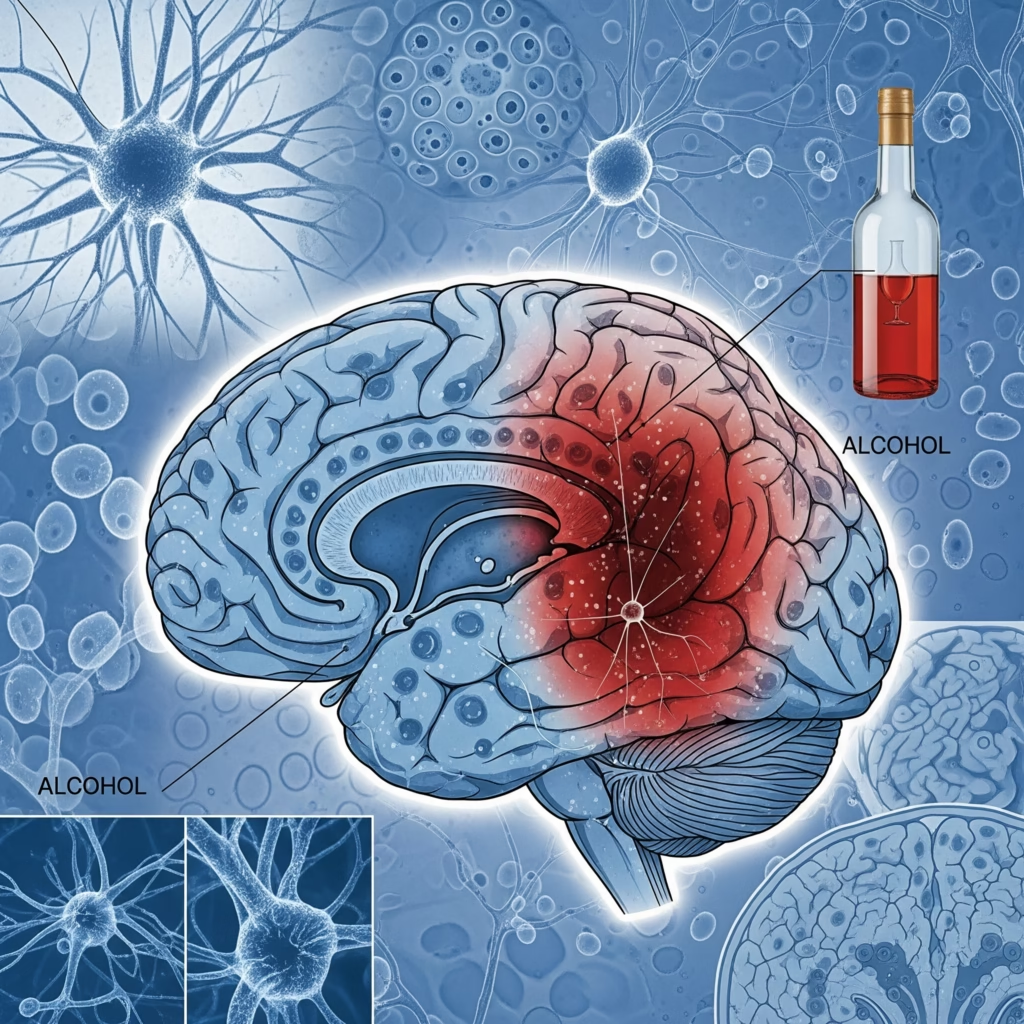The Breathalyzer, a device synonymous with roadside sobriety tests, plays a crucial role in maintaining road safety. But beyond its familiar presence, what exactly is it, how does it work, and what are its limitations? Let’s delve into the world of breathalysers.
What it is
A breathalyzer is a device used to estimate Blood Alcohol Content (BAC) from a breath sample. It’s a non-invasive and quick way for law enforcement to assess a driver’s level of intoxication, helping to determine if they are impaired and breaking the law.
Brief History Around It
The concept of using breath to detect alcohol isn’t new. As early as the 1930s, scientific research explored the correlation between breath alcohol and blood alcohol levels. However, it was Dr. Robert Borkenstein, a captain with the Indiana State Police and a professor at Indiana University, who is credited with inventing the first practical breathalyzer in 1954. His device, the “Breathalyzer,” revolutionized impaired driving enforcement and laid the groundwork for the technology we see today.
How it Works
Most modern breathalyzers utilize one of two primary technologies: fuel cell sensors or infrared spectroscopy.
- Fuel Cell Sensors: These are the most common type used in handheld police breathalyzers. When breath containing alcohol passes over a fuel cell, a chemical reaction occurs that generates an electrical current. The strength of this current is directly proportional to the amount of alcohol in the breath, which is then converted into a BAC reading.
- Infrared Spectroscopy: More sophisticated evidential breathalyzers, often found at police stations, use infrared light. Alcohol molecules absorb infrared light at specific wavelengths. By measuring how much infrared light is absorbed by a breath sample, the device can accurately determine the alcohol concentration.
The underlying principle for both is the Henry’s Law, which states that at a constant temperature, the amount of a given gas that dissolves in a given type and volume of liquid is directly proportional to the partial pressure of that gas in equilibrium with that liquid. In simpler terms, alcohol in your blood diffuses into the air in your lungs, and the breathalyser measures the alcohol in that air.
Variations
While breathalyzers aim to provide an accurate estimate of BAC, it’s important to understand that the Breath Alcohol Content (BrAC) measured by the device is then converted to an estimated BAC. The widely accepted ratio for this conversion is 2100:1, meaning that 2100 millilitres of breath is considered to contain the same amount of alcohol as 1 millilitre of blood.
However, several factors can influence how accurately a breathalyzer’s reading reflects your true blood alcohol content at a given moment:
- Individual Physiological Differences: Everyone metabolizes alcohol differently. Factors like age, gender, weight, body fat percentage, metabolism rate, and even liver health can affect how quickly alcohol is absorbed and eliminated.
- “Mouth Alcohol”: Residual alcohol in the mouth (from recent sips of alcohol, mouthwash, breath sprays, or even acid reflux) can lead to falsely high readings. This is why officers usually observe a driver for 15-20 minutes before administering a test, to allow any mouth alcohol to dissipate.
- Breathing Pattern: How a person blows into the device can also impact the reading. A shallow breath might yield a lower reading, while a deep lung breath is needed for an accurate sample representing alveolar air.
- Medical Conditions: Certain medical conditions can produce substances that breathalyzers might misinterpret as alcohol. For instance:
- Gastroesophageal Reflux Disease (GERD): Acid reflux can bring stomach contents, including alcohol vapors, back into the mouth and esophagus, leading to elevated readings.
- Diabetes and Ketoacidosis: When the body doesn’t have enough glucose for energy, it starts breaking down fats, producing ketones. Some breathalyzers, particularly older semiconductor models, might confuse these ketones with ethanol, leading to false positives.
- Environmental Factors: While less common with modern police-grade devices, extreme temperatures or the presence of certain fumes (e.g., paint, gasoline) in the air could potentially interfere with older or less sophisticated breathalyzers.
- Device Calibration and Maintenance: Just like any scientific instrument, breathalyzers require regular calibration and maintenance. A poorly calibrated or malfunctioning device will provide unreliable results.
Due to these variables, a blood test is often considered the most definitive measure of BAC in legal proceedings, as it directly quantifies the alcohol in the bloodstream.
What it Cannot Do
While highly effective, breathalyzers have limitations:
- Direct Blood Alcohol Measurement: A breathalyzer does not directly measure the alcohol in your blood. It provides an estimate based on the alcohol present in your breath.
- Identify Other Impairments: A breathalyzer only detects alcohol. It cannot identify impairment due to drugs, fatigue, or medical conditions.
- Differentiate Alcohol Types: It cannot distinguish between different types of alcohol (e.g., ethanol from alcoholic beverages versus methanol, which is highly toxic).
Faults of It
Despite their utility, breathalyzers are not infallible, as detailed in the section above on how levels can differ. These potential inaccuracies highlight the importance of proper testing procedures, device maintenance, and considering individual circumstances.
Regulation in the UK Around It
In the UK, the legal limit for driving is 35 micrograms of alcohol per 100 millilitres of breath, or 80 milligrams of alcohol per 100 millilitres of blood. The police can stop any driver and ask them to take a breath test if they suspect they’ve been drinking, have committed a traffic offence, or have been involved in an accident.
Evidential breath tests (those used to gather evidence for prosecution) must be conducted using approved devices that are regularly calibrated and maintained according to strict regulations set by the Home Office.
Common rights
While drivers in the UK are generally required to comply with a police request for a breath test, there are certain rights:
- Right to Refuse (with consequences): You can refuse a roadside preliminary breath test. However, if you do so without a “reasonable excuse” (such as a genuine physical or mental condition preventing you from providing a sample), you can be arrested. Refusal to provide an evidential breath test at the police station (again, without a reasonable excuse) is a criminal offence that carries the same or even harsher penalties as a drink-driving conviction itself, including a mandatory driving disqualification, a hefty fine, and potential imprisonment.
- Right to a “Reasonable Excuse”: If you genuinely cannot provide a breath sample due to a medical condition (e.g., severe asthma, lung condition, or facial injury), you must inform the officer. In such cases, the police may require a blood or urine sample instead.
- Right to Legal Representation (at the police station): At the police station, before providing an evidential breath sample, you generally have the right to consult with a solicitor. However, the police are not always required to wait for your solicitor to arrive before requesting the sample, especially if delays could affect the alcohol level reading. Refusing solely to wait for a solicitor may not be considered a reasonable excuse.
- Right to be Informed of Consequences: The police officer must clearly inform you of the legal consequences of failing to provide a breath specimen.
- Two Samples for Evidential Test: If you are taken to the police station for an evidential breath test, you will usually be asked to provide two breath samples. The lower of the two readings will be used for prosecution purposes (if above the legal limit), and the other will be disregarded.
- Option for Blood/Urine (in specific circumstances): If the breath test machine gives an unreliable reading, or if you have a medical reason preventing a breath sample, or if no breath test machine is available, the police may require a blood or urine sample. In such cases, you also have the right to request a portion of that sample for independent analysis.
It is always advisable to cooperate with police requests and seek legal advice promptly if you are facing a drink-driving investigation, as the penalties for refusal or conviction are severe.
Healthcare workers and Drinking
For healthcare workers, responsible drinking is paramount. However, there’s an added layer of ethical and professional responsibility. Healthcare workers are held to high standards of conduct, and any impairment, on or off duty, that could affect their ability to provide safe and effective patient care is a serious concern. Regulatory bodies, such as the Nursing and Midwifery Council (NMC) in the UK, expect nurses to maintain their fitness to practice. This includes being aware of their alcohol consumption and ensuring it does not compromise their professional responsibilities or bring the profession into disrepute. Impairment due to alcohol could lead to disciplinary action, including suspension or removal from the nursing register.
What to Do if You Have a Shift After a Party
For anyone, but especially for nurses and other professionals whose work directly impacts safety and well-being, responsible planning is crucial. If you’ve been to a party and consumed alcohol, and you have an upcoming shift:
- Prioritise Time to Sober Up: Alcohol takes time to metabolize. There’s no quick fix like coffee or a cold shower. On average, the body processes about one unit of alcohol per hour. So, if you’ve had a few drinks, you’ll need several hours (or more) before alcohol is fully out of your system. A good rule of thumb is to allow at least 12-24 hours after heavy drinking before performing duties that require full concentration and coordination, or before driving.
- Assess Your Fitness to Practice: Honestly evaluate whether you are truly fit to perform your duties. Ask yourself:
- Do I feel fully rested and alert?
- Is my judgment clear?
- Are my reaction times normal?
- Could any residual effects of alcohol (even a mild headache or fatigue) compromise my ability to provide safe care or make critical decisions?
- Would I be able to pass a breathalyzer test if one were administered, even if I’m not driving? (While not standard for workplace, it’s a good internal check).
- Consider the “Hair of the Dog”: Avoid consuming more alcohol (“hair of the dog”) to alleviate hangover symptoms. This will only prolong the presence of alcohol in your system and further impair your judgment.
- Hydrate and Rest: Drink plenty of water and prioritize sleep. While these won’t speed up alcohol metabolism, they will help alleviate hangover symptoms and contribute to overall alertness.
- Honesty is the Best Policy (If Unfit): If, after honest self-assessment, you believe you are not fit for duty due to alcohol consumption (or even a severe hangover that impairs you), it is ethically and professionally imperative to:
- Contact your supervisor/manager immediately: Explain the situation.
- Do not go to work impaired: Attending work under the influence or significantly impaired by alcohol is a serious breach of professional conduct and could put patients at risk. It can lead to severe disciplinary action, including dismissal and referral to your professional regulatory body (like the NMC).
- Do not try to “tough it out”: This risks patient safety and your career.
- Understand potential consequences: While honesty is valued, there may still be consequences depending on your workplace’s policies. However, attempting to conceal impairment and putting patients at risk will almost certainly lead to more severe outcomes.
Ultimately, preventing this situation is key. Plan your social activities to ensure adequate time for alcohol to leave your system and for you to recover fully before any shifts where professional judgment and patient safety are paramount.

Level of Alcohol and What it Means for Behaviour
While individual responses to alcohol vary, here’s a general guide to how different BAC levels can affect behavior:
- 0.01% – 0.03% BAC: Slight relaxation, minor impairment in judgment, sensation of warmth. At this level, effects are almost indiscernible, but judgment can still be subtly affected.
- 0.04% – 0.06% BAC: Feelings of relaxation and warmth intensify. Lowered inhibitions, minor impairment in reasoning and memory, reduced coordination, and ability to track moving objects. This is often described as a “buzz.”
- 0.07% – 0.09% BAC (Legal Limit in many places, including UK for driving is 0.08% blood/0.035% breath): Mild impairment of balance, speech, vision, and control. Judgment and self-control are reduced, and concentration is impaired. Reaction time is significantly slower. Euphoria may begin to diminish. This level makes driving unsafe and illegal.
- 0.10% – 0.12% BAC: Significant impairment in motor coordination and loss of good judgment. Speech may be slurred, and the ability to process information is reduced. Increased risk of injury.
- 0.13% – 0.15% BAC: Gross motor impairment and lack of physical control. Blurred vision and major loss of balance. Risk of accident for any activity. Potential for memory blackouts.
- 0.16% – 0.20% BAC: Nausea and vomiting may occur. The individual may appear “sloppy” and disoriented. Blackouts are likely. Requires assistance to stand or walk.
- 0.21% – 0.29% BAC: Severe motor impairment. Loss of consciousness is possible. Significant risk of life-threatening alcohol poisoning and respiratory depression. Immediate medical attention is often required.
- 0.30% BAC and above: Loss of consciousness, coma, and a high risk of death due to respiratory arrest.
This blog post is intended for informational purposes only and does not constitute legal or medical advice. The information provided about breathalyzers, alcohol levels, regulations, and professional conduct is for general understanding and should not be used as a substitute for professional legal counsel, medical consultation, or specific guidance from your professional regulatory body. Always consult with qualified professionals for advice tailored to your individual circumstances. Laws and regulations can change, and this information may not always be up-to-date or applicable in every jurisdiction. Relying on any information in this post is solely at your own risk.



